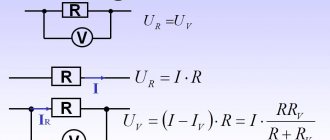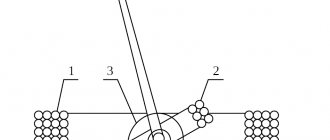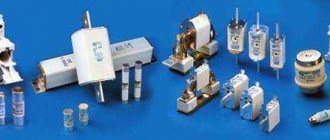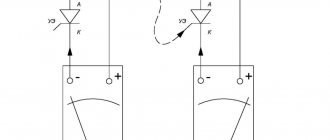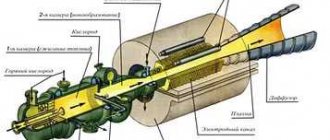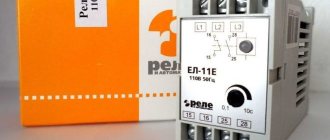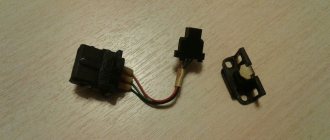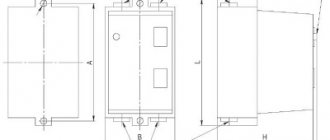Today, almost all areas of human activity from heavy industry to transport and household services are interested in the use of compact, productive and functional drive mechanisms. This is the reason for the constant improvement of traditional power unit concepts, which, although they are improved, do not change the fundamental design. The most popular basic systems of this type include an electromagnetic drive, the working mechanism of which is used in both large-format equipment and small technical devices.
Drive purpose
In almost all target applications, this mechanism acts as the executive body of the system. Another thing is that the nature of the function performed and the degree of its responsibility within the overall work process may change. For example, in shut-off valves, this actuator is responsible for the current position of the valve. In particular, due to its force, the overlap takes the position of a normally closed or open state. Such devices are used in various communication systems, which determines both the operating principle and the protective characteristics of the device. In particular, the electromagnetic smoke removal drive is included in the infrastructure of the fire safety system, being structurally connected to the ventilation ducts. The drive housing and its critical working parts must be resistant to high temperatures and harmful contacts with thermally hazardous gases. As for the execution command, the automation is usually triggered when signs of smoke are detected. The drive in this case is a technical means of regulating the flow of smoke and fumes.
A more complex configuration of the use of electromagnetic actuators occurs in multi-way valves. These are a kind of collector or distribution systems, the difficulty of managing which lies in the simultaneous control of entire groups of functional units. Such systems use an electromagnetic valve drive with the function of switching flows through the nozzles. The reason for closing or opening the channel can be certain values of the working medium (pressure, temperature), flow intensity, software time settings, etc.
How to install an electric valve for water with your own hands (12 Volt, 220V)
You can handle installing a solenoid valve (12 Volt, 220V) on water yourself. To avoid mistakes during this process, it is advisable to adhere to some rules:
- It is not allowed to install a locking device equipped with a coil that can act as a lever;
- all work on installing or dismantling the valve can only be carried out after the system is completely de-energized;
- Care must be taken to ensure that the weight of the pipeline does not put pressure on the valve body.
Important! When installing an electric valve for water (12 Volt, 220V) with your own hands, you need to control the direction of the arrow on the device body. It should point in the same direction where the water moves through the pipeline.
Shut-off devices can be used in open areas, for example, at local wastewater treatment plants, which can often be found in summer cottages. In this case, the electromagnetic device needs additional protection. A standard FUM tape is suitable for these purposes. It must also be used if work is carried out at low temperatures.
Related article:
Do-it-yourself automatic watering: how to install and use an irrigation system on the site
Selection of constituent components. Automatic watering schemes. Sprinkling, drip irrigation and subsoil automated irrigation.
When connecting the device to the power supply, be sure to use a flexible cable. The recommended core cross-section is 1 mm.
When installing the device with your own hands, you need to control the direction of the arrow on the solenoid valve body
Solenoid valve installation process (220V, 12V): practical tips
Before proceeding with direct installation, you need to determine what type of connection will be used for this.
With a threaded connection, the outlet and inlet pipes have internal or external threads. By using fittings of the appropriate size and configuration, the fittings can be integrated into the pipeline system. This option is considered the most convenient if the valve is installed by yourself.
With a flange connection, pipes are used that have flanges at the ends. The same elements must be present on the pipes. The parts are tightened using bolts. The flange connection allows you to create a high flow rate in the system, as well as a considerable pressure. Most often it is found on highways with medium and high pressure.
Instructions with a detailed description of the installation process are included with each package containing the valve. If everything is done correctly, the device will work properly, providing protection against leaks. When installing the device, you need to leave a little extra space in the installation area. This is necessary so that, if necessary, the solenoid can be removed and replaced. In addition, the presence of free space will allow you to control the operation of the valve, using a mechanism that allows you to manually lift the rod.
Each solenoid valve is supplied with detailed instructions for installing the device.
It is advisable to install a filter at the inlet of the valve. It will trap solid particles larger than 800 microns. Only a normally closed valve should be installed in front of the expansion valve. To eliminate the possibility of water hammer when opening the shut-off device, as little space as possible should be left between it and the expansion valve.
Important! Installation of solenoid valves on water is carried out exclusively with the coil facing upwards.
It is not recommended to use adapters in the section before and after the valve. These elements can narrow the diameter of the pipeline, increasing the risk of water hammer. It is better to place adapters in front of the expansion valve. If you install a T-shaped tube vertically into the solenoid valve, which will act as a damper, you can reduce the force of the water hammer that occurs when closing. In addition, the presence of such a tube will increase the service life of the device. A damper is extremely necessary if the pipeline is long and has a small diameter.
Construction and components
The central working element of the drive is the solenoid unit, which is formed by a hollow coil and a magnetic core. The electromagnetic communication of this component with other parts is provided by small internal fittings with control pulse valves. In its normal state, the core is supported by a spring with a rod that rests on the seat. In addition, a typical electromagnetic drive device provides for the presence of a so-called manual override of the working part, which takes over the functions of the mechanism in moments of sudden changes or complete absence of voltage. Additional functionality may also be provided, provided by signaling means, auxiliary locking elements and core position clamps. But since one of the advantages of drives of this type is their small size, for optimization purposes, developers try to eliminate excessive saturation of the design with secondary devices.
Finite continuous solenoids
A finite solenoid is a solenoid with a finite length. Continuous means that the solenoid is not formed by discrete coils, but by a sheet of conductive material. We assume that the current is uniformly distributed on the surface of the solenoid with surface current density K
; in cylindrical coordinates:
The magnetic field can be found using the vector potential, which for a finite solenoid with radius a
and the length
L
in cylindrical coordinates is
Where
Here are complete oval integrals of the first, second, and third types.
Using
The magnetic flux density is obtained as
The principle of operation of the mechanism
In both magnetic and electromagnetic power devices, the role of the active medium is played by the magnetic flux. To form it, either a permanent magnet or a similar device is used with the ability to point-to-point or disable its activity by changing the electrical signal. The actuator begins to operate from the moment voltage is applied, when current begins to flow through the solenoid circuits. In turn, as the magnetic field activity increases, the core begins to move relative to the cavity of the inductor. Actually, the operating principle of an electromagnetic drive boils down to the conversion of electrical energy into mechanical energy through a magnetic field. And as soon as the voltage drops, the forces of the elastic spring come into play, which returns the core to its place and the drive armature assumes its original normal position. Also, to regulate individual stages of force transmission in complex multi-stage drives, pneumatic or hydraulic drives can be additionally activated. In particular, they make possible the primary generation of electricity from alternative energy sources (water, wind, sun), which reduces the cost of the equipment’s operating process.
Solenoid inductance
Oil pressure reducing valve: design, operating principle and purpose
The inductance of the solenoid is expressed as follows:
L=μn2V=μ4πz2l{\displaystyle L=\mu _{0}n^{2}V\!={\frac {\mu _{0}}{4\pi }}{\frac {z^{2 }}{l}}} (SI) (6),{\displaystyle \qquad (6),} L=4πn2V=z2l{\displaystyle L=4\pi n^{2}V\!={\frac { z^{2}}{l}}} (GHS) (7),{\displaystyle \qquad (7),}
where μ{\displaystyle \mu _{0}} is the magnetic permeability of the vacuum, n=Nl{\displaystyle n=N/l} is the number of turns per unit length of the solenoid, N{\displaystyle N} is the number of turns, V=Sl {\displaystyle V=Sl} - volume of the solenoid, z=πdN{\displaystyle z=\pi dN} - length of the conductor wound on the solenoid, S=πd24{\displaystyle S=\pi d^{2}/4} - cross-sectional area of the solenoid, l{\displaystyle l} is the length of the solenoid, d{\displaystyle d} is the coil diameter.
Without the use of magnetic material, the magnetic induction B{\displaystyle B} within the solenoid is effectively constant and equal to
B=μNlI=μnI(8),{\displaystyle B=\mu _{0}{\frac {N}{l}}I=\mu _{0}nI\qquad (8),}
where I{\displaystyle I} is the current strength. Neglecting edge effects at the ends of the solenoid, we find that the flux linkage Ψ{\displaystyle \Psi } through the coil is equal to the magnetic induction B{\displaystyle B} multiplied by the cross-sectional area S{\displaystyle S} and the number of turns N{\displaystyle N} :
Ψ=BSN=μN2ISl=μn2VI=LI(9).{\displaystyle \displaystyle \Psi =BSN=\mu _{0}N^{2}IS/l=\mu _{0}n^{2}VI =LI\qquad (9).}
This implies the formula for the inductance of the solenoid
L=μN2Sl=μn2V(10),{\displaystyle \displaystyle L=\mu _{0}N^{2}S/l=\mu _{0}n^{2}V\qquad (10),} equivalent to the previous two formulas.
Actuating actions of the electromagnetic drive
The movement pattern of the drive core and its ability to work as an output power unit determine the features of the actions that the mechanism can perform. It should be noted right away that in most cases these are devices with the same type of elementary movements of the executive mechanics, which are rarely supplemented with auxiliary technical functions. Based on this feature, the electromagnetic drive is divided into the following types:
- Turning. In the process of applying current, the power element is triggered, which rotates. Such mechanisms are used in ball and plug valves, as well as in butterfly valve systems.
- Reversible. In addition to the main action, it is capable of providing a change in the directions of the power element. More common in control valves.
- Pushing. This electromagnetic actuator performs a pushing action, which is also used in control valves and shut-off valves.
From the point of view of the design solution, the power element and the core may well be different parts, which increases the reliability and durability of the device. Another thing is that the optimization principle requires combining several tasks within the functionality of one technical component in order to save space and energy resources.
Selecting a solenoid valve: device prices and popular brands
When selecting shut-off valves for a water supply system, you must carefully study the specifications and descriptions provided by the manufacturer. This information will allow you to determine under what conditions the installation of a particular valve model is permissible.
When choosing a valve for a water supply system, you need to pay attention to the dimensions of the outlet and inlet holes.
When choosing a device, you need to take into account the following points:
- system type;
- temperature regime;
- pressure level;
- chemical composition of the liquid;
- current speed, etc.
The dimensions of the outlet and inlet openings are of considerable importance. These parameters must correspond to the diameter of the pipes. It is very important that the characteristics of the system and shut-off valves match, otherwise disruptions in the hydraulics of communications may occur. This outcome is possible if, in the area where the valve is installed, the flow of liquid slows down due to a narrow hole, which will inevitably affect the pressure level and temperature in the entire pipeline.
Solenoid valve prices:
| Device model | Price, rub./piece |
| Ceme Solenoid Valves | |
| D20 G3/4 | 3200 |
| D25 G1″ | 4750 |
| 87 G 2 1/2 D65 | 33200 |
| 87 G 3 D75 | 38650 |
| D75 G 3 D75 | 46850 |
| Shut-off solenoid valves ZSK | |
| ZSK-15 DU 15 | 12500 |
| ZSK-25 DU 25 | 13200 |
| ZSK-32 DU 32 | 14000 |
| Danfoss solenoid valves | |
| EV210B solenoid valves | |
| EV210B G 3/8 NC | 2850 |
| EV210B DN8 G 3/8 NC | 3350 |
| EV210B G 1/4 | 4200 |
| EV210B | 4850 |
| EV220B solenoid valves | |
| EV 220B 6B | 2800 |
| EV220B NC G1/2 | 5500 |
| EV220B NO G1/2 | 6450 |
| EV220B 20B | 11150 |
| EV220B 32B | 16550 |
Danfoss solenoid valves
Danfoss valves are equipped with various types of equipment - from pumps installed at gas stations, to machines that can be found in dry cleaners. The small size of these devices does not at all affect their level of reliability. Danfoss produces a wide range of valves. Thanks to this, in stores you can find modifications that other manufacturers produce exclusively on special order.
Danfoss solenoid valves are small in size, but this does not affect their level of reliability at all
Advantages of Danfoss solenoid valves:
- a wide range of general purpose devices;
- even standard modifications can solve many problems faced by the industry;
- The product range allows you to select devices that can come into contact with very aggressive media, for example, valves whose body is made of stainless steel and is provided with protection class IP67.
Note! If necessary, Danfoss may modify products based on the buyer's specifications. Thanks to this, you can find optimal solutions for any industrial task. Moreover, representatives of the purchasing company can take part in the development process.
The shut-off devices come with a complete technical documentation package and also provide simplified guides to help customers select the valve with the right characteristics. The production process involves specialists who are experts in the regulation of gas, steam and liquids. Therefore, the products are characterized by high functionality, reliability and safety.
Danfoss produces both direct-acting and servo-operated solenoid valves
On sale you can find direct acting electromagnetic locking devices equipped with a servo drive. Danfoss EV220B two-way solenoid valves, which are designed to regulate neutral gases, water, air, and oils, are in particular demand. Some modifications from this line can control steam and mildly aggressive environments.
Features of Asco solenoid valves
The American company Asco is one of the leading manufacturers of hydropneumatic, electromagnetic and shut-off valves, as well as pneumatic cylinders, pneumatic automation and other automation devices.
Product advantages:
- instrumentation equipment is manufactured on modern production lines with a wide range of functionality;
- if necessary, the valves can be easily repaired, and the process itself does not take much time;
- high level of reliability;
- ability to withstand contact with aggressive environments and extreme loads.
The manufacturer produces more than 5,000 standard types of shut-off valves. In addition, Asco produces special modifications and versions of these devices, the number of which exceeds 20,000. All of them are designed to meet the different needs of customers. At the same time, the manufacturer complies with the strictest quality requirements, monitoring all stages of production, including the development process, sales, and service.
The quality of Asco solenoid valves is confirmed by ISO 9002 and 9001 certificates
Note! Before hitting store shelves, products are carefully checked for manufacturing defects and are also tested. The highest quality of the valves is confirmed by ISO 9002 and 9001 certificates.
Arcom Products: AR HX 3 Solenoid Valve Specifications
Arcom supplies the market with thousands of items of electrical equipment. This list includes recorders (paperless and paper), controllers, electrical and measuring instruments, various tools and related accessories. Solenoid valves occupy a special place in the range. Buyers can purchase more than 4,500 locking device options at an affordable price. Moreover, all products are certified and meet a high level of quality.
In the manufacturer's catalogs you can select fittings that allow you to control the movement of water, air and petroleum products. In addition, the manufacturer provides a huge selection of spare parts, relays, coils, connectors and valves for these devices.
Despite the extensive range, special attention is paid to solenoid valves; the HX 3 solenoid valve, due to its many advantages, is considered the most popular model:
Solenoid valve AR HX 3 is designed to regulate steam, air, hot and cold water
- durable, durable stainless steel case;
- fast response (reacts when the pressure reaches zero);
- minimum sizes;
- ability to connect to sensors.
This model is designed to regulate hot and cold water, steam and air, which allows you to install the valve even in electric irons, coffee machines and other devices that use steam in their work.
Electromagnetic fittings
The drive actuators can operate in different configurations, performing certain actions required for the operation of a specific operating infrastructure. But in any case, the function of the core or power element alone will not be enough to provide a sufficient effect in terms of performing the final task, with rare exceptions. In most cases, a transition link is also required - a kind of translator of the generated mechanical energy from the direct drive mechanics to the target device. For example, in an all-wheel drive system, the electromagnetic clutch acts not just as a force transmitter, but as a motor that rigidly connects the two parts of the shaft. Asynchronous mechanisms even have their own excitation coil with pronounced poles. The leading part of such couplings is made according to the principles of the rotor winding of an electric motor, which completely gives this element the functions of a converter and force translator.
In simpler direct-acting systems, the task of transmitting force is performed by standard ball bearing devices, hinge and distribution units. The specific design and configuration of the action, as well as the relationship with the drive system, are implemented in different ways. Individual schemes for interfacing components with each other are often developed. In the same electromagnetic drive coupling, an entire infrastructure is organized with its own metal shaft, slip rings, collectors and copper bars. And this is not counting the parallel arrangement of electromagnetic channels with pole pieces and contours for the direction of magnetic field lines.
Solenoid
A solenoid is a conductor twisted in a spiral through which an electric current is passed (Figure 1, a).
If you mentally cut the turns of the solenoid across, designate the direction of the current in them, as indicated above, and determine the direction of the magnetic induction lines according to the “gimlet rule”, then the magnetic field of the entire solenoid will have the form shown in Figure 1, b.
Figure 1. Solenoid (a) and its magnetic field (b)
Figure 2. Computer model of the solenoid
On the axis of an infinitely long solenoid, on each unit of length of which n turns are wound, the magnetic field strength inside the solenoid is determined by the formula:
H = I × n.
At the point where the magnetic lines enter the solenoid, a south pole is formed, and where they exit, a north pole is formed.
To determine the poles of the solenoid, they use the “gimlet rule”, applying it as follows: if you place the gimlet along the axis of the solenoid and rotate it in the direction of the current in the turns of the solenoid coil, then the translational movement of the gimlet will show the direction of the magnetic field (Figure 3).
| Figure 3: Solenoid Poles Determination | Figure 4. Electromagnet |
Video about the solenoid:
Drive operating parameters
The same design with a typical operating scheme may require the connection of different powers. Also, typical models of drive systems differ in power load, type of current, voltage, etc. The simplest electromagnetic valve drive operates from a 220 V network, but there may also be models with a similar design, but requiring connection to three-phase industrial networks at 380 V. Power supply requirements are determined by the size of the device and the operating characteristics of the core. The number of engine revolutions, for example, directly determines the amount of power consumed, and with it the insulation properties, windings and resistance parameters. If we talk specifically about industrial electrical infrastructure, then in the project for integrating a powerful drive, traction forces, the characteristics of the grounding loop, the implementation diagram of circuit safety devices, etc. must be calculated.
Simple drivers for solenoids
The easiest way to control a solenoid is to turn the current on and off.
This is often done using a low side MOSFET switch and a current protection diode (picture below).
In this circuit, the current is limited only by the supply voltage and the constant resistance of the solenoid.
The electromechanical performance of a simple solenoid actuator is limited. Since full voltage and current are applied 100% of the time, the pull-in current is limited by the constant power dissipation of the solenoid. The large inductance of the coil limits the rate of current rise when the solenoid is turned on.
Block drive systems
The most common design form factor for the release of drive mechanisms based on the electromagnetic operating principle is block (or aggregate). This is an independent and partially isolated device, which is mounted on the body of the target mechanism or also on a separate actuator unit. The fundamental difference between such systems is that their surfaces do not come into any contact with the cavities of the transition power links, and especially the working elements of the executive bodies of the target equipment. At the very least, such contacts do not require any measures to be taken to protect both structures. The block type of electromagnetic drive is used in cases where functional units need to be isolated from the negative influence of the working environment - for example, from the risks of corrosion or temperature effects. To provide a mechanical connection, the same isolated valve body, like a rod, is used.
Results
Let's summarize. The most common reasons for the failure of solenoid valves in a box are:
1. Clogging. The highest damage is caused by the adhesive layer on the clutches. All the channels become clogged, and the plungers jam. Abnormal functionality of the valve solenoids can disrupt the operation of the entire automatic transmission. This means that the hydraulic unit should still be cleaned from time to time and it is advisable to change it as the clutches wear out. The torque converter clutch deserves special attention.
2. Development of the solenoid valve itself and its parts. Accept that, unfortunately, they also do not last forever and have their own reasonable resource. It would be good to replace them according to the regulations, without waiting until the computer starts showing an error during diagnostics.
Remember, even the most modern and reliable electric valves need replacement after 200,000 kilometers! The most insignificant changes in the characteristics of the electric valves of the gearbox hydraulic unit will entail the presence of slipping and jolts when changing gears.
With prolonged abnormal use, all the iron parts of the box will break: clutch basket, braking band, planetary gears, etc. And restoration and replacement of the latter will be much more expensive in monetary terms than the current periodic service.
Features of the built-in drive
A type of electromagnetic power drives that act as an integral part of the working system, forming a single communication infrastructure with it. As a rule, such devices have compact dimensions and low weight, which allows them to be integrated into a wide variety of engineering structures without significantly affecting their functional and ergonomic characteristics. On the other hand, size optimization and the need to expand the possibilities for strapping (direct connection to equipment) limit the creators in ensuring a high degree of security for such mechanisms. Therefore, standard low-cost insulating solutions such as sealed separation tubes are being considered to help protect sensitive elements from the aggressive effects of the working environment. Exceptions include vacuum valves with an electromagnetic drive in a metal casing, to which fittings made of high-strength plastic are connected. But these are already specialized enlarged models that have comprehensive protection against toxic, thermal and mechanical factors.
Introduction
When controlling the flow of liquid and gaseous media in modern industrial plants, two types of valves are most often used: solenoid valves and pneumatic actuated valves. The huge number of different models of both types of valves, designed for a wide variety of applications, has led to the fact that the choice between a solenoid (solenoid) valve and a pneumatic valve is no longer obvious.
This article discusses the design features of both types of valves and how these features affect valve selection and operation. The described phenomena and the conclusions obtained are valid for almost all valves, regardless of the model or manufacturer, since the causes of these phenomena are concentrated in the very principle of operation of the valve types under consideration.
Areas of application of the device
With the help of this drive, problems of power mechanical support of various levels are solved. In the most critical and complex systems, sealless fittings are used to control electromagnetic devices, which increases the reliability and performance of the equipment. In this combination, units are used in transport and communication pipeline networks, when servicing storage facilities for petroleum products, in the chemical industry, at processing stations and plants in various industries. If we talk about simple devices, then an electromagnetic fan drive for supply and exhaust systems is common in the domestic sphere. Small-format mechanisms also find their place in sanitary fittings, pumps, compressors, etc.
